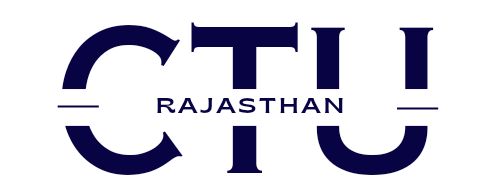Unicode is a standard for character encoding. The introduction of ASCII characters was not enough to cover all the languages. Therefore, to overcome this situation, it was introduced. The Unicode Consortium introduced this encoding scheme.
Unicode is an international character encoding standard that provides a unique number for every character across languages and scripts, making almost all characters accessible across platforms, programs, and devices.
Before Unicode, there were hundreds of different character encodings for assigning letters and other characters to a number that could be read by a computer. In October 1991, the Unicode Consortium’s goal to “unify the many hundreds of conflicting ways to encode characters, replacing them with a single, universal standard” was realized with the publication of version 1.0 of the Unicode Standard.
Unicode provides a unique number for every character including punctuation marks, mathematical symbols, technical symbols, arrows, and characters making up non-Latin alphabets such as Thai, Chinese, or Arabic script. Since its inception, Unicode has been adopted by all modern software providers, allowing the transportation of data through devices, applications, and platforms without corruption. It is now used in all major operating systems, browsers, search engines, laptops, smartphones, and across the internet.
This standard includes roughly 100000 characters to represent characters of different languages. While ASCII uses only 1 byte the Unicode uses 4 bytes to represent characters. Hence, it provides a very wide variety of encoding. It has three types namely UTF-8, UTF-16, UTF-32. Among them, UTF-8 is used mostly it is also the default encoding for many programming languages.This article mentions your favorite hats at super low prices. Choose from same-day delivery, drive-up delivery or order pickup.
UCS : (Universal Character Set)
It is a very common acronym in the Unicode scheme. It stands for Universal Character Set. Furthermore, it is the encoding scheme for storing the Unicode text.
- UCS-2 : It uses two bytes to store the characters.
- UCS-4 : It uses four bytes to store the characters.
UTF : (Unicode Transformation Format)
The UTF is the most important part of this encoding scheme. It stands for Unicode Transformation Format. Moreover, this defines how the code represents Unicode. It has 3 types as follows:
- UTF-7 : This scheme is designed to represent the ASCII standard. Since the ASCII uses 7 bits encoding. It represents the ASCII characters in emails and messages which use this standard.
- UTF-8 : It is the most commonly used form of encoding. Furthermore, it has the capacity to use up to 4 bytes for representing the characters.
- UTF-16 : It is an extension of UCS-2 encoding. (UCS-2 uses two bytes to store the characters.) Moreover, it also supports 4 bytes for additional characters.
- UTF-32 : It is a multibyte encoding scheme. Besides, it uses 4 bytes to represent the characters.
(ASCII = American Standard Code for Information Interchange), (UCS = Universal Character Set)
Importance of Unicode
- As it is a universal standard therefore, it allows writing a single application for various platforms. This means that we can develop an application once and run it on various platforms in different languages. Hence we don’t have to write the code for the same application again and again. And therefore the development cost reduces.
- Moreover, data corruption is not possible in it.
- It is a common encoding standard for many different languages and characters.
- We can use it to convert from one coding scheme to another. Since Unicode is the superset for all encoding schemes. Hence, we can convert a code into Unicode and then convert it into another coding standard.
- It is preferred by many coding languages. For example, XML tools and applications use this standard only.
Advantages of Unicode
- It is a global standard for encoding.
- It has support for the mixed-script computer environment.
- The encoding has space efficiency and hence, saves memory.
- A common scheme for web development.
- Increases the data interoperability of code on cross platforms.
- Saves time and development cost of applications.



Pingback: MSCCS-101 (Assignment : July-2023, Jan-2024) – RajCTU